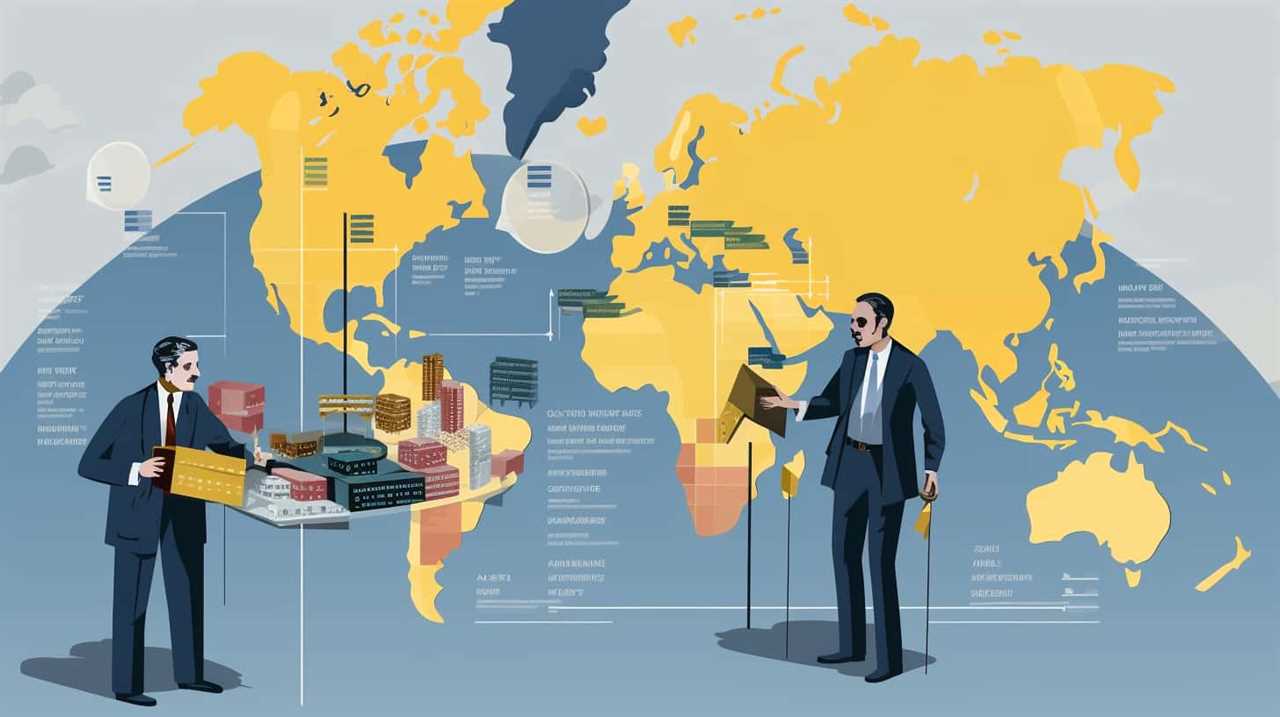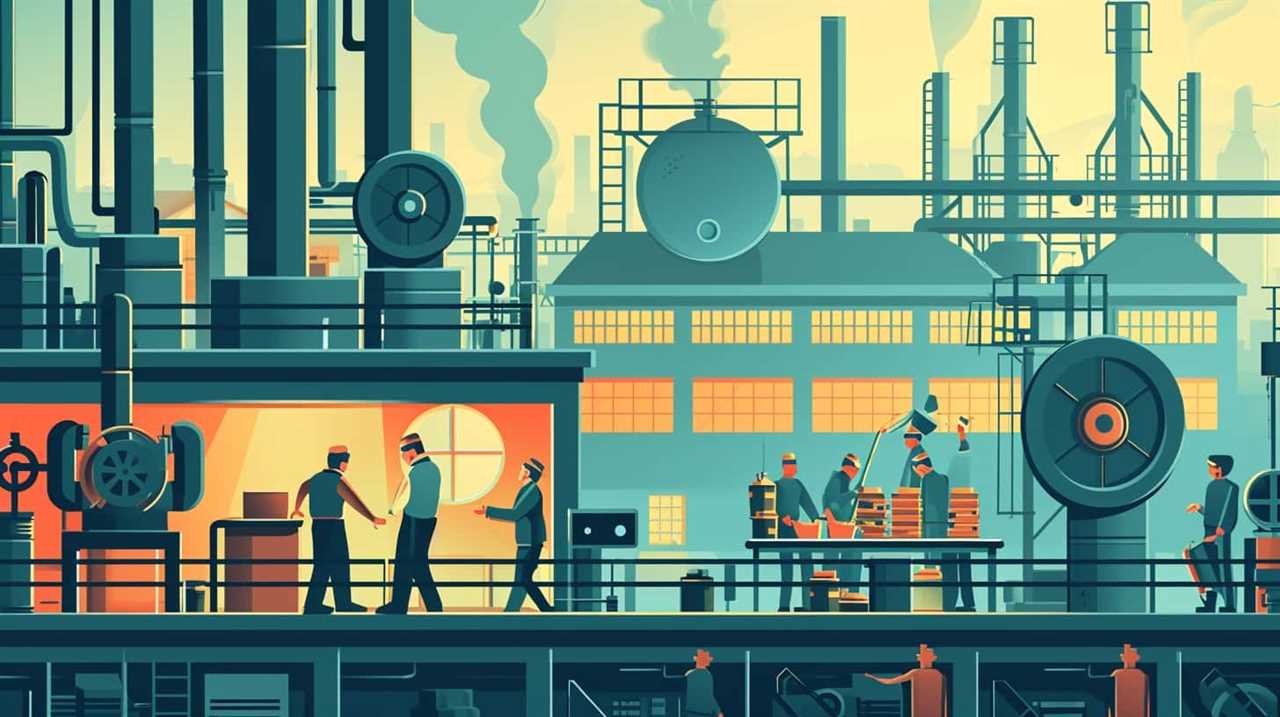Hello! Today, we will explore the intriguing realm of Keynesian theory and its historical influence.
Get ready to explore four incredible examples of how this theory shaped our world.
First up, the Great Depression, a challenging time that called for innovative solutions.
Then, we’ll delve into how Keynesian theory played a pivotal role in World War II, helping nations navigate the economic challenges of war.

After that, we’ll explore the transformative effects of the New Deal, a bold and innovative response to the Great Depression.
Finally, we’ll uncover how Keynesian principles contributed to the post-World War II economic boom, propelling nations forward into a new era of prosperity.
So, buckle up and prepare to be amazed by these four best examples of Keynesian theory shaping history!
Key Takeaways
- Keynesian theory was developed as a response to the causes of the Great Depression, including the stock market crash, overproduction, and unequal distribution of wealth.
- The implementation of Keynesian economics during World War II, through increased government spending and monetary policies, successfully stimulated demand, boosted production, and created jobs.
- The New Deal policies, influenced by Keynesian theory, aimed at addressing the economic challenges of the Great Depression and promoting economic growth through government intervention and employment programs.
- The post-World War II economic boom was fueled by the implementation of Keynesian economic policies, which led to massive infrastructure development, increased consumerism, and a surge in economic growth and prosperity.
The Great Depression
During the Great Depression, we relied on the implementation and effectiveness of Keynesian theory to navigate the economic crisis. The causes of the Great Depression were complex and multifaceted, including factors such as the stock market crash of 1929, overproduction, and unequal distribution of wealth. These factors led to a severe contraction in economic activity, resulting in massive unemployment and a decline in consumer spending.

Keynesian theory, developed by economist John Maynard Keynes, offered a new approach to economic policy during this challenging time. It advocated for government intervention through increased public spending and monetary policy to stimulate demand and promote economic growth. This approach aimed to counter the effects of the depression by boosting aggregate demand and creating jobs.
The effects of implementing Keynesian theory during the Great Depression were significant. Government spending on public works projects, such as the construction of infrastructure and social programs, helped alleviate unemployment and stimulate economic activity. Additionally, monetary policies, such as lowering interest rates, encouraged borrowing and investment, further contributing to economic recovery.
Keynesian theory provided a framework for policymakers to address the economic crisis of the Great Depression by actively managing the economy through government intervention. By focusing on stimulating demand and promoting economic growth, this approach played a crucial role in leading the United States out of the depths of the depression and setting the stage for future economic policies.
World War II
World War II showcased the practical application of Keynesian theory in shaping economic policies. During this period, Keynesian economics played a crucial role in guiding governments’ intervention in war economies.

Here are three key ways in which Keynesian principles influenced economic policies during World War II:
- Increased government spending: Governments around the world significantly increased their spending to support the war effort. This injection of funds into the economy stimulated demand, boosted production, and helped create jobs.
- Expansionary fiscal policies: Governments implemented expansionary fiscal policies, such as tax cuts and increased public expenditure, to stimulate economic activity. These measures aimed to increase aggregate demand and counteract the negative effects of the war.
- Government control and regulation: Governments exercised greater control and regulation over key industries to ensure efficient resource allocation and production. This intervention ensured that essential goods and services were prioritized for the war effort.
Transitioning to the subsequent section about ‘the New Deal,’ it’s important to note that the lessons learned from the successful implementation of Keynesian economics during wartime laid the foundation for the New Deal policies aimed at addressing the economic challenges of the Great Depression.
The New Deal
Transitioning from the impact of Keynesian theory during World War II, the New Deal represented a significant turning point in American history. The New Deal was a series of economic programs and reforms implemented by President Franklin D. Roosevelt in response to the Great Depression. It marked a shift towards government intervention and the use of employment programs to stimulate the economy and provide relief to the American people.
One of the key aspects of the New Deal was the creation of the Works Progress Administration (WPA). The WPA aimed to provide employment to millions of Americans by funding public works projects such as the construction of roads, bridges, and public buildings. This not only helped to alleviate unemployment but also improved the country’s infrastructure.

Another significant program under the New Deal was the Civilian Conservation Corps (CCC). The CCC focused on employing young, unemployed men in conservation projects such as reforestation and soil conservation. This not only provided jobs but also contributed to environmental conservation efforts.
The New Deal also included other initiatives such as the Social Security Act, which established a system of retirement benefits and unemployment insurance, and the Tennessee Valley Authority, which aimed to modernize the region’s economy through the development of hydroelectric power and flood control.
Post-World War II Economic Boom
After the end of World War II, we experienced a period of economic boom due to the successful application of Keynesian theory. The post-war years were marked by a surge in economic growth and prosperity, driven by the implementation of Keynesian economic policies.
Here are three key factors that contributed to this remarkable period of expansion:

- Massive infrastructure development: Governments invested heavily in building new roads, bridges, and public facilities. This not only created jobs but also facilitated transportation and trade, stimulating economic activity.
- Increased consumer spending: Keynesian theory emphasized the importance of boosting demand to drive economic growth. With the war over and soldiers returning home, there was a surge in consumer spending on goods and services. This increased demand further fueled economic expansion.
- Industrialization and technological advancements: The post-war era witnessed rapid industrialization and technological progress. Industries expanded their production capacities, leading to increased output and employment opportunities. Innovations in manufacturing, such as automation and mass production techniques, also improved productivity and efficiency.
The successful application of Keynesian economic policies, combined with infrastructure development, increased consumer spending, and industrialization, paved the way for an unprecedented period of economic growth and prosperity.
This post-war economic boom laid the foundation for future advancements and shaped the modern world as we know it today.
Frequently Asked Questions
How Did Keynesian Theory Play a Role in Shaping the Economic Policies of Other Countries During the Great Depression?
Keynesian theory played a role in shaping the economic policies of other countries during the Great Depression. The role of government in implementing fiscal policy became crucial in stimulating aggregate demand and restoring economic growth.
What Were Some of the Criticisms and Opposition Faced by Keynesian Theory During World War Ii?
During World War II, Keynesian theory faced criticisms and opposition. Detractors argued that it would lead to inflation and excessive government intervention. However, its proponents believed that it was necessary to stimulate the economy and support war efforts.

How Did the New Deal Programs Implemented by the US Government Incorporate Keynesian Economic Principles?
The New Deal programs implemented by the US government during the Great Depression incorporated Keynesian economic principles, which had a significant impact on post-war infrastructure development and played a crucial role in addressing unemployment.
What Were the Long-Term Effects of the Post-World War II Economic Boom on the Global Economy?
The post-World War II economic boom had significant long-term consequences on the global economy, including sustained economic growth and increased prosperity. This period of expansion was fueled by various factors such as increased consumer spending, technological advancements, and government policies.
How Did Keynesian Theory Influence the Development of Social Welfare Programs and Income Redistribution Policies in Various Countries After World War Ii?
Keynesian theory had a significant impact on poverty reduction and the redistribution of wealth after World War II. Social welfare programs and income redistribution policies were developed in various countries, influenced by the principles of Keynesian economics.
How Has Keynesian Theory Been Influenced by Kahneman’s Insights on Economic Biases?
Keynesian theory has been influenced by Kahneman’s insights on economic biases, prompting a reevaluation of how individuals make decisions in economic contexts. Kahneman’s research on insights on economic biases has shed light on the irrational behaviors that can impact economic decision-making, leading to a deeper understanding of Keynesian economic principles.
Conclusion
In conclusion, the Keynesian theory has had a profound impact on shaping history through its influence on major events such as the Great Depression, World War II, the New Deal, and the post-World War II economic boom.

One fascinating statistic that highlights the effectiveness of Keynesian policies is the significant reduction in unemployment rates during the implementation of the New Deal, where it dropped from 25% to 9.6% within six years.
This demonstrates the theory’s ability to stimulate economic growth and alleviate social hardships.
Lauren’s talent in writing is matched by her passion for storytelling. Her love for books and deep understanding of culture and entertainment add a distinct flavor to her work. As our media and press contact, Lauren skillfully bridges the gap between afterQuotes and the broader media landscape, bringing our message to a wider audience.










